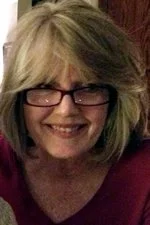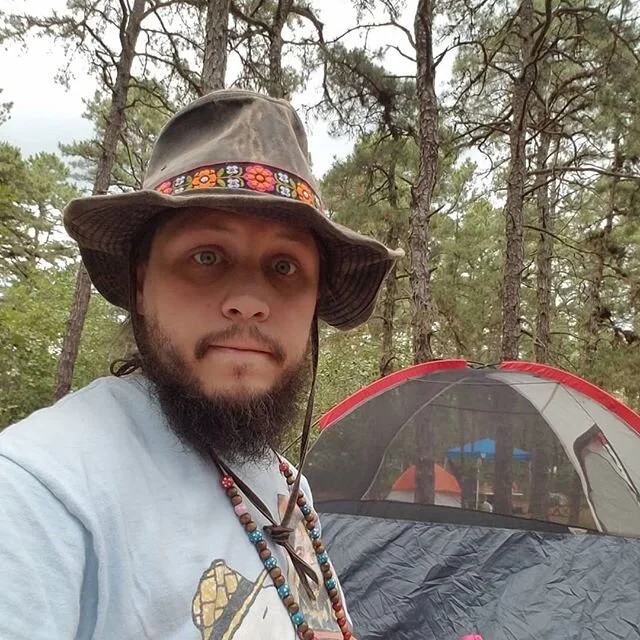Abiding
by Bernadette McBride
What best to give your loved ones over time,
express your devotion’s ever deepening?
You read ardor in the great poets and lyricists;
contemplate verve on canvas, pedestal, stage,
screen, and city wall; in public choke back
the tremors these bouquets flood you with;
in private try your own puny hand at offerings,
not quite believing they’ll ever be enough,
your beloveds will ever apprehend your deep intent.
You wish you could pour yourself into them
like light; soft, like expanding clouds or cool,
as fresh water wells from a grotto spring;
fill them so full, they can’t mistake your fervor.
Or you want to be a circle of angels around them,
walk invisible along, sighing graces to their ears,
keeping them to good things only, a buffer
against slings and arrows they’ll never divine
because of you. But knowing communion’s
persistent limits, that perfect love is so often
an abiding distance, a respect for space between
forms, you offer what you can: a subtle gesture,
a handful of words written on paper.
—With permission, from Everything Counts,
Aldrich Press/Kelsay Books, 2019
How would you describe your poetic aesthetic? What are you interested in as a writer?
When my first book was published, an artist friend called my poems “painterly.” I hadn’t set out to make them come across that way, but I think she noticed my natural leanings in seeing them that way. I love Art in all its genres, am also a visual artist myself, so I do work to portray beauty through imagery in my poems; beauty that can be found in the darker aspects of life as well as in our common notions of what makes things beautiful. I’ve also generally leaned toward narrative, though I’ve found in the last few years, I’m moving into a different style, more spare, for the new book I’m working on.
I’ve always been interested in the ways religion informs human lives all over the world —in our early learning about right and wrong, in our laws, private and public worship rituals, in world art, and in spirituality apart from prescriptions. I’m working from that instinct in my new poems. I also try to emulate John Keats’ view that poetry should “…strike the reader as a wording of his own highest thoughts, and appear almost a remembrance."
As a writing professor and poetry editor, what excites you about others’ work?
I’ve read some of the most remarkable poems from students —uninhibited yet generally measured to the subject’s reach, “clean, lean, and (golden) mean” styles, unexpected delights in experimentation. I had a student at Temple many years ago, who, in showing a group of friends stopped in their car at a railroad crossing, described the speed of the train as it passed in front of them by writing what was written on each car in one, unbroken line-length word. Such a great bow to “Show Don’t Tell.” That kind of ingenuity, surprising and effective use of language, whether connected to the extraordinary or quotidian events of life, excites me. And I was blessed to be able to read countless numbers of poems as editor of Schuylkill Valley Journal, where so many of the submissions did that; had me saying, “Oh, wow!”
In addition to being a poet, you sketch and paint. Do you find similarities/overlap in these creative processes? How do you decide what muse becomes a painting and what becomes a poem?
Oh, yes, yes. I find similarities among all the arts, really; the differences are simply in the execution of the message, the universality of which I think is summed up pretty well in the old mildly humorous adage, ’Were it not for love, loss, and death, there’d be no poetry.’ Well, there’d also be no music, no stage, sculpture, painting, choreography, film. I envision ideas as floating everywhere, infinite as the universe, seeking a carnate hand to reveal them. We reveal them through the gifts we’ve been given. I’m sure we all know artists who work in more than one genre, which speaks to your second point. I’m not sure I decide whether an inspiration becomes a painting or poem; I think it’s more about divining than deciding what the idea presents, an impulse. For example, I’ve painted a large body of Celtic-oriented art work and have also written many poems based on the same themes. I’m also drawn often to writing ekphrastic poems on paintings of artists from various cultures, so I think there’s an overlap there too.
Your poems are grounded in the everyday but have a sort of magical/mystical quality to them. I think some of this is achieved by sound and rhythm. What is your strategy for making music in your poems?
I take that as a compliment, so thank you, John. It’s interesting that you say this, both of the mystical (which I addressed above) and music. I come from a musical family. My father was a musician, my mother, a vocalist. We grew up in a house in which my father’s swing band rehearsed in our living room. All my siblings and I took various music lessons, and three of us have played in bands (not all in the same ones). So it seems apparent that my instinct for sound and rhythm comes from those experiences. As a child, I loved reading the poetry we learned in school and wrote little poems to the tunes of children’s songs and some of the swing standards, so I think I’ve carried that impulse probably more subconsciously than strategically into my poetry.
You recently stepped down as poetry editor for Schuylkill Valley Journal. What is next for you?
I’m currently teaching a poetry writing class, and I work as an editor of both poetry and other genres for private clients. On the poetry side of this, I work with poets on their individual poems, as well as those preparing chap- and full-length manuscripts, helping both fine-tune their poems and organizing them for submitting to publishers. I’m also a founding member of No River Twice (NRT), an interactive poetry improv troupe, in which the readings are never the same, being prompted by audience members. As far as art, I’ve been working on paintings of historic homes and buildings, along with other themes and private commissions.
Where can readers view your work and buy your books/prints?
I welcome visits to my website, bernadettemcbridepoetry.com for books information and a number of samples of my artwork, as well as the Galleries/Literary Arts link at bucksarts.org, which is the website for the Arts and Cultural Council of Bucks County, of which I’m a member. My books can also be found on Amazon or purchased directly by contacting me at bernadette.mcbride@gmail.com.
Bernadette McBride, author of four full-length poetry collections, was long-time poetry editor for the Schuylkill Valley Journal. She taught creative writing and literature at Temple University for many years and served as poet-in-residence for DeSales University’s MFA program launch
as well as on the advisory panel for the program’s forward vision. A founding member of the improv poetry troupe No River Twice, she also served as the 2009 Pennsylvania Poet Laureate for Bucks County. Her work has appeared in numerous journals and anthologies, including in the UK, Canada, and on PRI’s The Writer’s Almanac. (bernadettemcbridepoetry.com)
John Wojtowicz grew up working on his family’s azalea and rhododendron nursery in the backwoods of what Ginsberg dubbed “nowhere Zen New Jersey.” Currently, he works as a licensed clinical social worker and adjunct professor. He has been featured on Rowan University’s Writer’s Roundtable on 89.7 WGLS-FM and several of his poems were chosen to be exhibited in Princeton University's 2021 Unique Minds: Creative Voices art show at the Lewis Center for the Arts. He has been nominated 3x for a Pushcart Prize and serves as the Local Lyrics contributor for The Mad Poets Society Blog. His debut chapbook Roadside Oddities: A Poetic Guide to American Oddities was released in early 2022 and can be purchased at www.johnwojtowicz.com. John lives with his wife and two children in Upper Deerfield, NJ.



